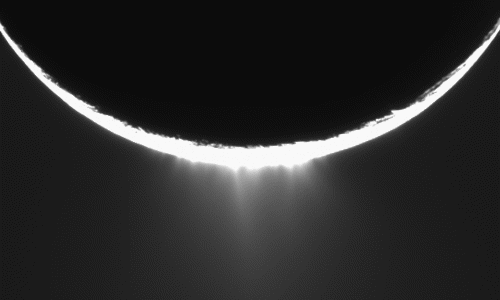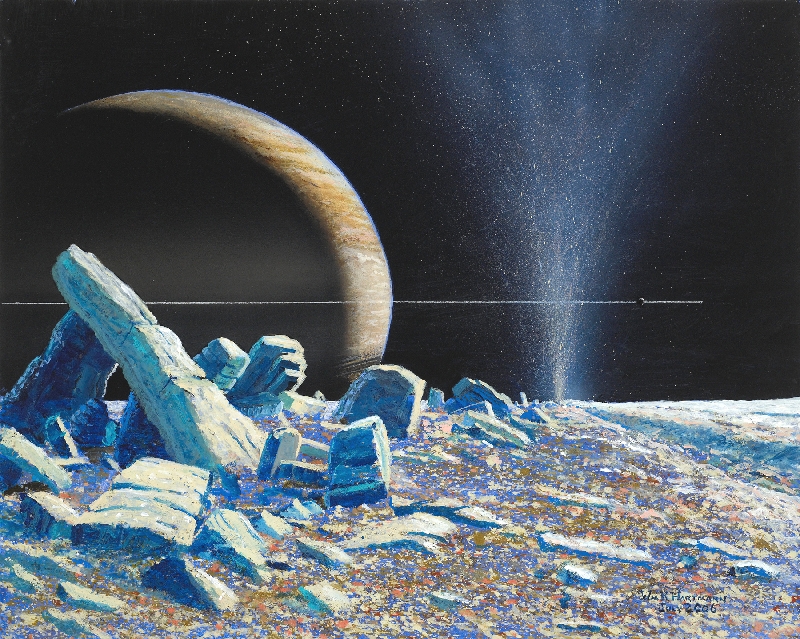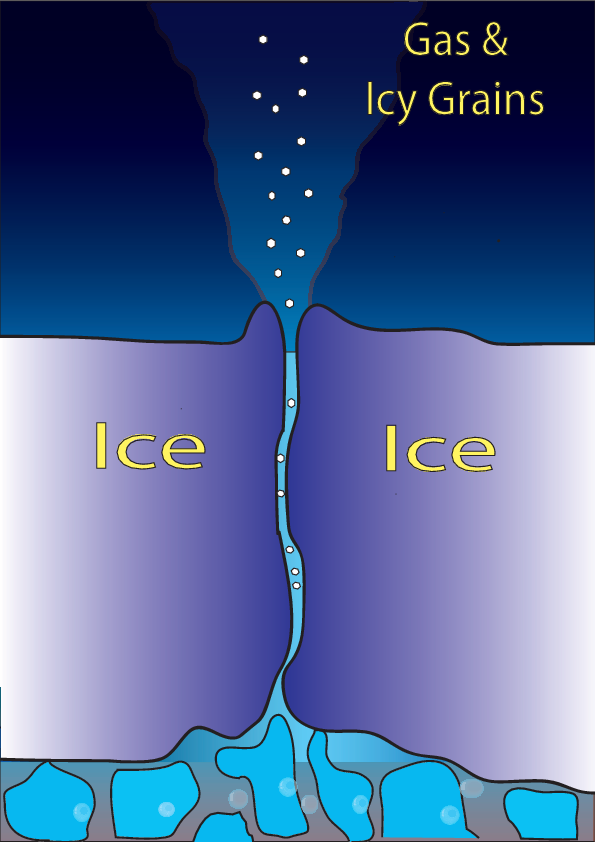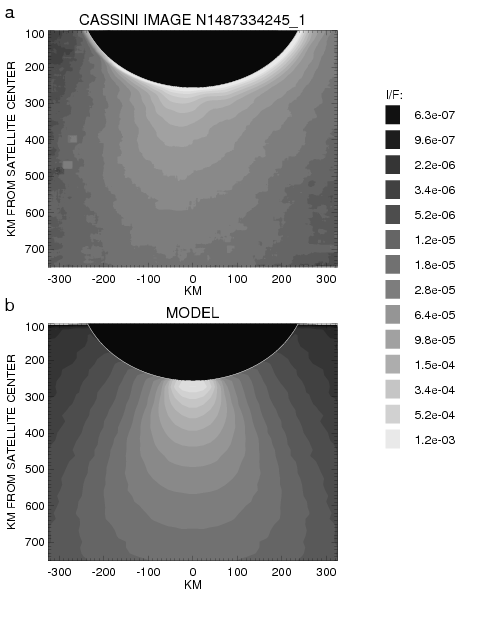Dr Juergen Schmidt
jschmidt@agnld.uni-potsdam.de
phone: +49 (0) 331 977 1626 (office)
+49 (0) 177 43 901 44 (mobile)
fac : +49 (0) 331 977 1142

The plume of water vapor and tiny ice grains towering the south pole of Saturn's satellite Enceladus was one of the big surprises of the Cassini mission to Saturn. The ice grains, also called dust, are only 1/1000 of a millimeter in size. They are directly visible as a fine spray in Cassini images, when lit by the sun from behind, ejected as jets from the south polar region of Enceladus.
Our model offers a simple explanation how these icy grains are formed by condensation from water vapor, when the vapor flows from subsurface reservoirs of liquid water through a system of cracks in the icy crust of Enceladus to space.


The sources of the plume are located on the `Tiger Stripes', four aligned cracks in the ice shell of Enceladus, visible in bluer color in the lower part of the image. The moon itself was discovered by the German/British astronomer Wilhelm Herschel in 1789. He could not have picked a better name, since ancient Greeks attributed earth quakes and volcanism to action of the giant Enceladus. In Greek mythology Athena defeated Enceladus in a fight, smashing the island of Sicily on the Giant. There he now lies half buried below the mountain of Aethna as in the scene pictured here in the park of Versailles. He is unable to escape, yet his struggle to do so was believed to shake the earth (Vergil, 3rd book of the Aeneid), thereby explaining the activity of the volcano to ancient Greeks and Romans.

Those grains that escaped from Enceladus over thousands of years form Saturn's E ring, a huge dust ring that extends outside Saturn's main ring system from about three Saturnian radii (about 60,000 km) out to at least eight Saturnian radii, and probably much further out. Naturally, the E ring is densest near Enceladus. In the this image we see this part of the ring with Enceladus in the center. But the dust grains born at Enceladus slowly migrate outward, away from the moon, due to the action of charged atoms and molecules (the plasma in the Saturnian system) and Saturn's magnetic field, and so they gradually formed the less dense parts of the E ring.

This is how the artist and scientist Bill Hartmann paints the view from Enceladus over its south polar terrain, with a jet of ejected ice particles and vapor. From the Cassini images obtained over the last two years it became clear that at least the largest jets remain permanently active over this time span, although their strength may be subject to variation, in contrast to the Yellowstone geysers with their short eruptions after longer periods of quiescence.

Schematic picture of the new model for particle formation. The geophysical and ice-volcanic (= cryo-volcanic) activity near the south pole suggest a hot interior of Enceladus, most probably with a liquid body of water below the south pole. The tension in the ice crust associated with the heat leads to the system of cracks in the ice shell that manifest at the surface in the Tiger Stripes. At depth, liquid water, vapor, and ice coexist, and the vapor flows through the cracks to the surface and expands from the Tiger Stripes to space.
We develop a theory for the flow of the vapor from the site of evaporation up to the surface. We show that under these conditions particles of the observed size and abundance naturally condense from the vapor. Further, we show that the vapor must be fairly dense to transport the large number of grains through the cracks to the surface and eject them to space, where they make up the observed plume. However, high gas densities require high temperatures at the site of evaporation, so that we can conclude on liquid water at some depth below the south pole of Enceladus.

From the results of the theory for condensation of grains in Enceladus south polar cracks, we develop a computer model of the dust plume. This model matches the measurements of the Cassini Cosmic Dust Analyzer obtained during a close flyby of Enceladus. And it matches the brightness of the plume observed by the Cassini cameras, the Imaging Science Subsystem. The figure shows contours of equal brightness in a Cassini image (upper panel) and from the model. Differences arise from a simplifying approximation adopted in the model, where particles are ejected from all over a circular area around the south-pole, and not, as is the case, from a limited number of isolated sources.